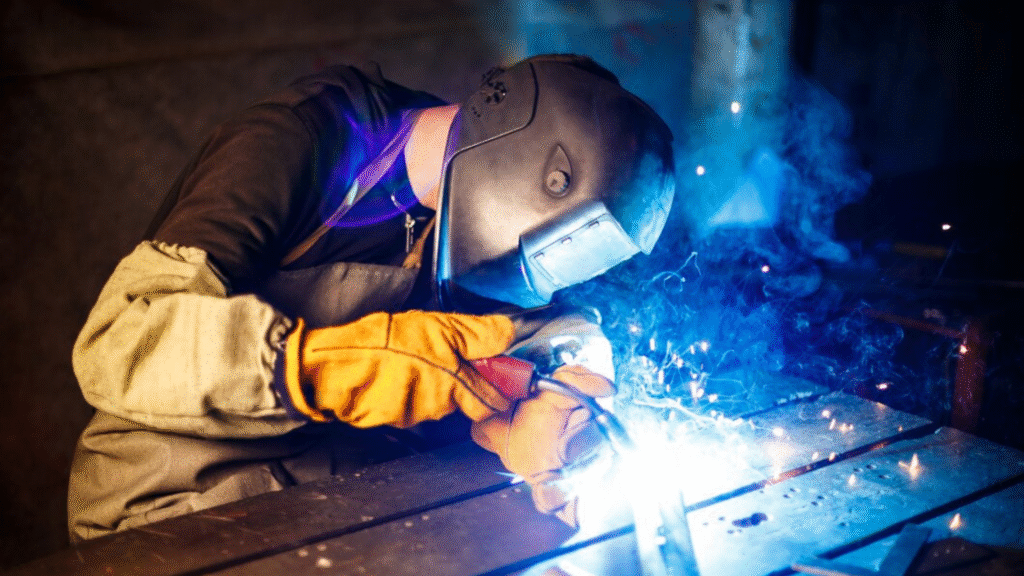TIG welding, officially known as Tungsten Inert Gas welding, is a sophisticated technique revered for producing immaculate and precise welds. This technology differs from MIG or stick welding because it uses a non-consumable tungsten electrode to generate the arc required for welding. By protecting the welding region from airborne contaminants, the inert gas—typically argon or helium—ensures high-quality joins without needing flux.
The increasing complexity of modern manufacturing processes has led to a surge in demand for such precise welding techniques. Industries ranging from aerospace to automotive require joints with minimal distortion and superior finish quality, tasks for which TIG welding is ideally suited. Companies like Ck World Wide have been pivotal in advancing the tools and technologies dedicated to enhancing TIG welding capabilities and supporting welders in achieving impeccable results across diverse applications.
Essential Tools for TIG Welding
The success of a TIG welding project hinges significantly on the quality and appropriateness of the tools employed. The TIG torch, the non-consumable tungsten electrode, a reliable power source, and the shielding gases are central to this. Each tool must be meticulously chosen to complement the materials being welded, as this influences the stability and effective management of the arc.
Selecting the right torch involves considering factors like handle ergonomics, cooling methods (air or water-cooled), and technical specifications that match your power source. The tungsten electrodes come in various compositions and sizes, chosen based on the welded metal and the required amp output. Similarly, ensuring your power source delivers consistent output without fluctuations can enhance the quality and precision of your welds. Proper care and regular maintenance of these tools are essential, as they forestall potential equipment-induced anomalies and prolong the life of the equipment.
Techniques to Perfect Your Weld
Mastering TIG welding techniques is vital for achieving flawless welds. This begins with gaining proficiency in torch control and developing a steady hand movement. The angle and movement speed of the torch greatly affect the quality of the bead, requiring welders to maintain a rhythmic, controlled movement that spreads the weld evenly along the joint.
Heat management is another critical skill in TIG welding. The precise control of the heat input prevents the workpiece from overheating and ensures the weld is penetrated sufficiently without burning through. This balance is challenging and often takes years to perfect. Maintaining consistent filler rod additions and learning to read the weld puddle can drastically improve weld quality. Enhanced techniques and real-time practice sessions allow welders to refine their methods, leading to cleaner, aesthetically pleasing welds that meet structural demands efficiently.
Safety Measures to Consider
Safety is paramount in any welding practice, and TIG welding is no exception. Proper safety gear, including helmets with adequate shading, leather gloves, and aprons, forms the first line of defense against potential hazards like burns or arc eye—a painful condition caused by ultraviolet radiation exposure to the eyes. Helmets equipped with auto-darkening features are particularly beneficial in protecting from sudden flashes.
Beyond personal protective equipment, ensuring a well-ventilated work area can significantly reduce exposure to harmful fumes produced during welding. Investing in local exhaust ventilation systems or portable fume extractors can create a safer respiratory environment. Adhering to safety protocols, such as those provided by OSHA, also minimizes risks and creates a structured approach to handling welding tasks, emphasizing the importance of workplace safety and comprehensive training.
Common Challenges and How to Overcome Them
Like any highly specialized skill, TIG welding presents unique challenges, especially to novices. Problems such as tungsten contamination can lead to weak and inconsistent welds; such issues often arise from touching the tungsten to the filler rod or workpiece and contaminating it with foreign materials. This results in weld defects and necessitates the regrinding or replacement of the electrode.
Arc instability can also plague beginner welders, typically caused by improper setup or irregular hand movements. To counter these common pitfalls, it is crucial to focus on developing a disciplined, steady technique. Workshops and hands-on training sessions provide essential practice opportunities. Listening to experienced professionals share insights can offer practical tools and strategies, enriching a welder’s skill set and boosting confidence in tackling complex welding jobs.
Real-World Applications of TIG Welding
TIG welding’s capability extends across high-stakes domains where precision and aesthetic appeal are valued. It is instrumental in assembling airframes and critical components in aerospace, where superior joint quality can bear significant safety implications. Its ability to join dissimilar metals is also utilized in sectors like nuclear and fabrication.
The automotive industry showcases TIG welding’s flexibility, applying it in crafting custom exhaust systems and roll cages where a polished look is desired alongside strength and durability. Beyond conventional industries, artists and sculptors are increasingly drawn to TIG welding for its precision, enabling the creation of intricate sculptures and installations. This versatility underscores TIG welding’s role as a manufacturing mainstay and a dynamic tool in creative fields.
Future Trends in Welding Technology
The welding industry is evolving rapidly, with technological advancements reshaping traditional methods. The rise of automation and robotics presents opportunities to achieve consistent quality and efficiency while reducing human error. These technologies promise to enhance productivity and allow welders to focus on more complex, skilled tasks requiring human intuition.
As the sector integrates these innovations, the role of the welder evolves, moving towards a blend of technical operators and skilled artisans. Keeping abreast of emerging trends and technologies benefits professionals looking to enhance their capabilities and positions businesses at the cutting edge of what is possible in welding. This constant evolution expands artistic and industrial possibilities, allowing for more ambitious and imaginative TIG welding applications.







